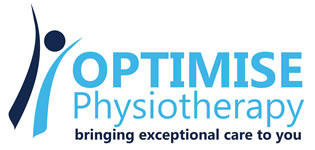
Reflections on a recent Musculoskeletal Physiotherapy Brainstorm known as #TheBigRs
I was sitting at a table that was allocated to discussing how we improve our ‘Public Messaging’. Everyone there was passionate about their profession, we began by talking about how we can best get a consistent message about what we do in relation to the treatment of musculoskeletal problems.
Fundamentally we agreed that we need to get information, backed up by clear evidence, out to the public, fellow physiotherapists and other medical professionals. Without uniting the whole medical world in this way, we are at risk of sending out mixed messages to our patients – at best this can be confusing and at worse, it can cause iatrogenic ongoing pain (which stems from a fear about their condition).
Why are we not all singing from the same song sheet?
There are many reasons for this:
1. We simply do not know the answer to everything and rather than using best available research/ knowledge we go with what we ‘think’ will be helpful or has ‘helped’ others in the past. Lots of unevidenced treatments do work, but do they work for the reasons we give them? Is it simply the relationship we have built with the patients and therefore the ‘trust’ they have in us that helps? Is it perhaps that some conditions will simply improve with time? Or maybe patients just become less afraid to move. We need to be honest with our patients and with ourselves.
2. Are we too worried about our own finances (certainly in the private sector) to empower our patients by educating them on certain myths surrounding musculoskeletal problems – perhaps discrediting lengthy or costly treatments. I’m sure this is not done with intent but how do we go about changing these behaviours?
3. We, as healthcare professionals, have different ways of looking at problems and therefore at times send out different messages to the public. For example, physios, chiropractors, osteopaths and doctors could approach a patient with lower back pain with a wide variety of approaches. Even within the physiotherapy profession this happens, so the poor patient can be stuck in the middle of all this – getting a huge range of confusing messages – all whilst trying to live with their back pain!
We all have stories of patients being told to rest by their GPs or even other Physios, or that they risk damaging themselves further or ending up with more problems down the line if they don’t do ‘these exercises’ or ‘have that surgery’. How are our patients supposed to know who or what to believe? Think of the difference in outcomes of a patient who has been primed to see you, ‘Go to the physio they will be able to guide you how to best achieve your goals’ to the patients who have been told, for example, ‘surgery’ or ‘acupuncture’ is the only thing that will get you better. How hard does it make our job and the patients journey?
What’s the solution?
We need to respect that we are all autonomous practitioners and each one of our approaches can help the patient in their journey but acknowledge that we still don’t necessarily know why they might work. However, there are a few standard things that will help them:
a. About 95% of conditions are not sinister and will probably get better by themselves with time, as long as the patient doesn’t pick up bad habits along the way (such as fearful movement). Patients need to be confident in their ability to manage their condition in order to lead a full life.
b. They are in charge of their own mental and physical health and as such need to look after this in all aspects of their life. We should be their guiders, motivators and educators but we should not try and be their healers. When patients expect the latter, I generally ask them if they would like me to get my fairy dust out!
c. Exercise is crucial in all conditions and is by far the best evidenced treatment for osteoarthritis and back pain through to general frailty. But it may need to be modified and normal function returned to slowly.
How do we engage our fellow health care professionals, including physios, to spread these messages? I wish I knew the answer. NHS England, Public Health England, the Chartered Society of Physiotherapy and all the other professional bodies need to keep promoting these simple messages. We all need to be singing from the same song sheet, we don’t all need to be singing the same part but we do need to harmonise!
How do we get these simple messages across to patients? In a world where information is so easy to access, where putting ‘Physiotherapy Treatment’ into Google brings up 31,700,000 answers, how can we help our patients to sift out the reality from the magic.
Ultimately, we need to continue using and promoting the best evidenced treatments, whilst putting the patient and their goals at the heart of their care. And maybe there’s nothing wrong with a little sprinkling of fairy dust!
